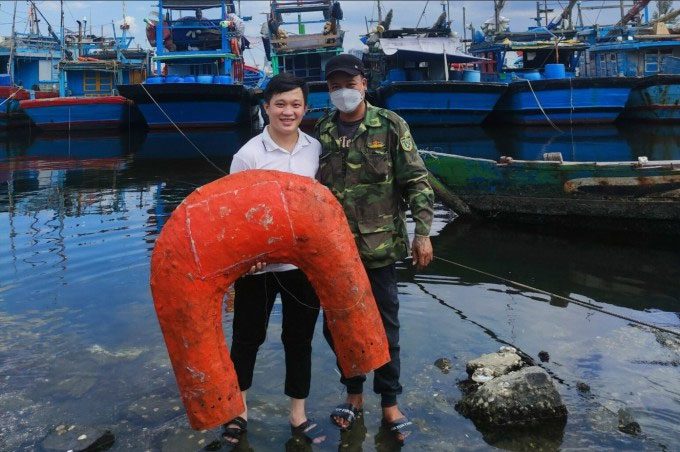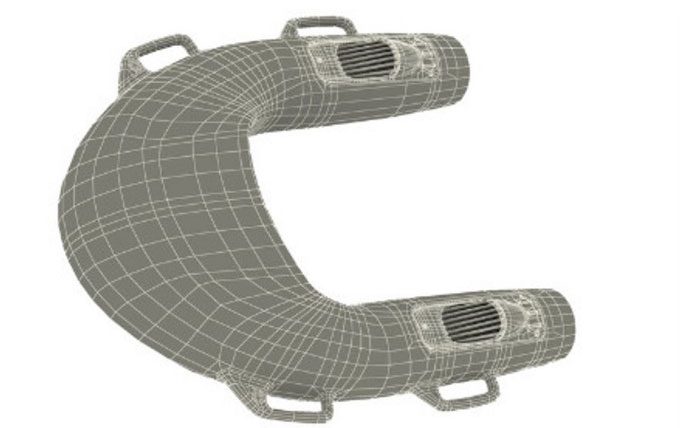Two students from the University of Danang University of Science and Technology have developed a self-locating life buoy that communicates with a wristband using GPS technology to find people in distress.
The product was created by Tran Van Phuc and Dang Thanh Son, fourth-year students from the Department of Electrical Engineering, starting their research in August 2022. Their goal was to create a smart buoy that utilizes technology to replace traditional life buoys for rescuing individuals in emergencies.
Team leader Tran Van Phuc shared that the smart buoy is designed with a GPS device that can communicate with the user’s wristband to send signals, allowing the buoy to autonomously locate the person in distress without manual control.
Tran Van Phuc presenting the product at a fishing port in Da Nang. (Video: NVCC)
The buoy is made from composite fibers, shaped like a U, and can be hung on the side of a boat or along the bank of a lake or river, secured with an electromagnetic lock. The product is equipped with two electric motors at the rear, capable of reaching a maximum speed of 20 km per hour. The user’s wristband is fitted with a pressure sensor and GPS for locating the distressed individual.
When a person falls into the water and reaches a preset threshold, the pressure sensor sends information to the control circuit. The GPS system is also equipped on the buoy. Two GPS signals are sent back to the central control circuit, comparing positions to activate the nearest buoy to autonomously approach the individual in distress. At that point, the nearest buoy unlocks its electromagnetic lock to reach the person in distress based on the GPS location.

The life buoy being tested by the team at a fishing port to understand fishermen’s needs. (Photo: NVCC).
The team conducted product testing at a fishing port in Da Nang last July to evaluate the device’s effectiveness. Fishermen were given wristbands and tested by submerging them in water to activate the system. The results showed that the device could locate individuals in distress within a radius of 180 meters in two minutes, under conditions of small waves and light winds.
The rescue device must ensure high readiness in case of emergencies. Therefore, Phuc and Son developed a mobile application to manage all information related to the life buoy, such as its location, operational status, battery life, and contact numbers for local emergency services. This ensures the product is always ready to operate effectively when needed.
However, according to Phuc, when operating in marine environments, the GPS system may experience signal delays, affecting rescue capabilities. The team plans to test communication connectivity using radio waves to address this issue. Additionally, while operating at sea, the current motor may struggle to maintain speed in conditions of large waves and strong winds. The team intends to invest in a more powerful motor for stable operation in marine environments.

Design image of the active life buoy from the team. (Photo: NVCC).
Master Do Hoang Ngan My, a lecturer at the Department of Control Engineering and Automation, University of Danang University of Science and Technology, praised the team’s idea. The team has created a smart buoy with active rescue capabilities featuring a high level of automation, requiring no manual control. However, the research is currently testing a single buoy, and not a system with multiple buoys. Therefore, the team needs to develop a common monitoring model for the entire system of multiple buoys to ensure readiness and accuracy during operations.
Furthermore, Master My suggested that product testing should be conducted multiple times under scenarios that closely resemble real-life situations to adjust the design and features of the life buoy to suit various rescue environments.



















































